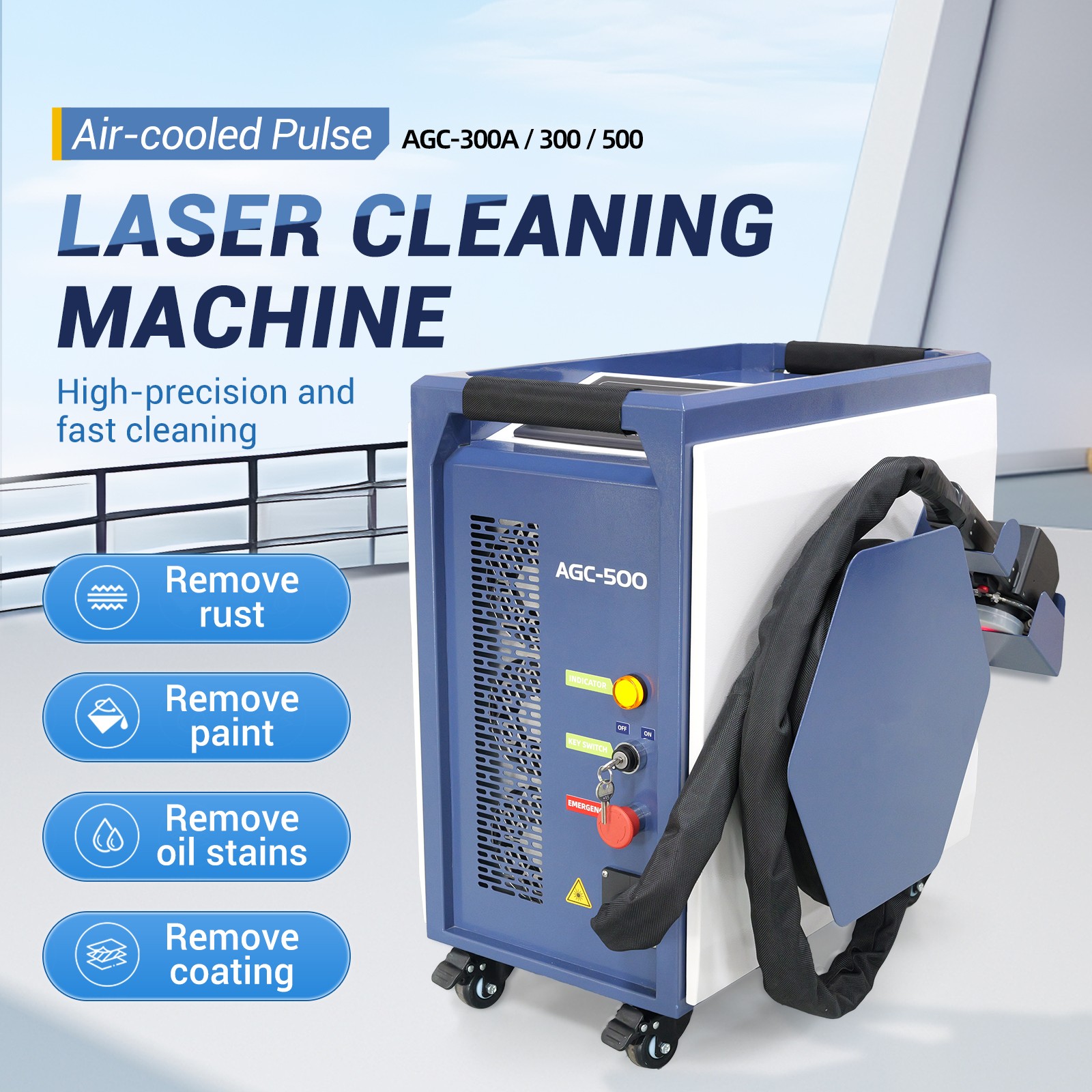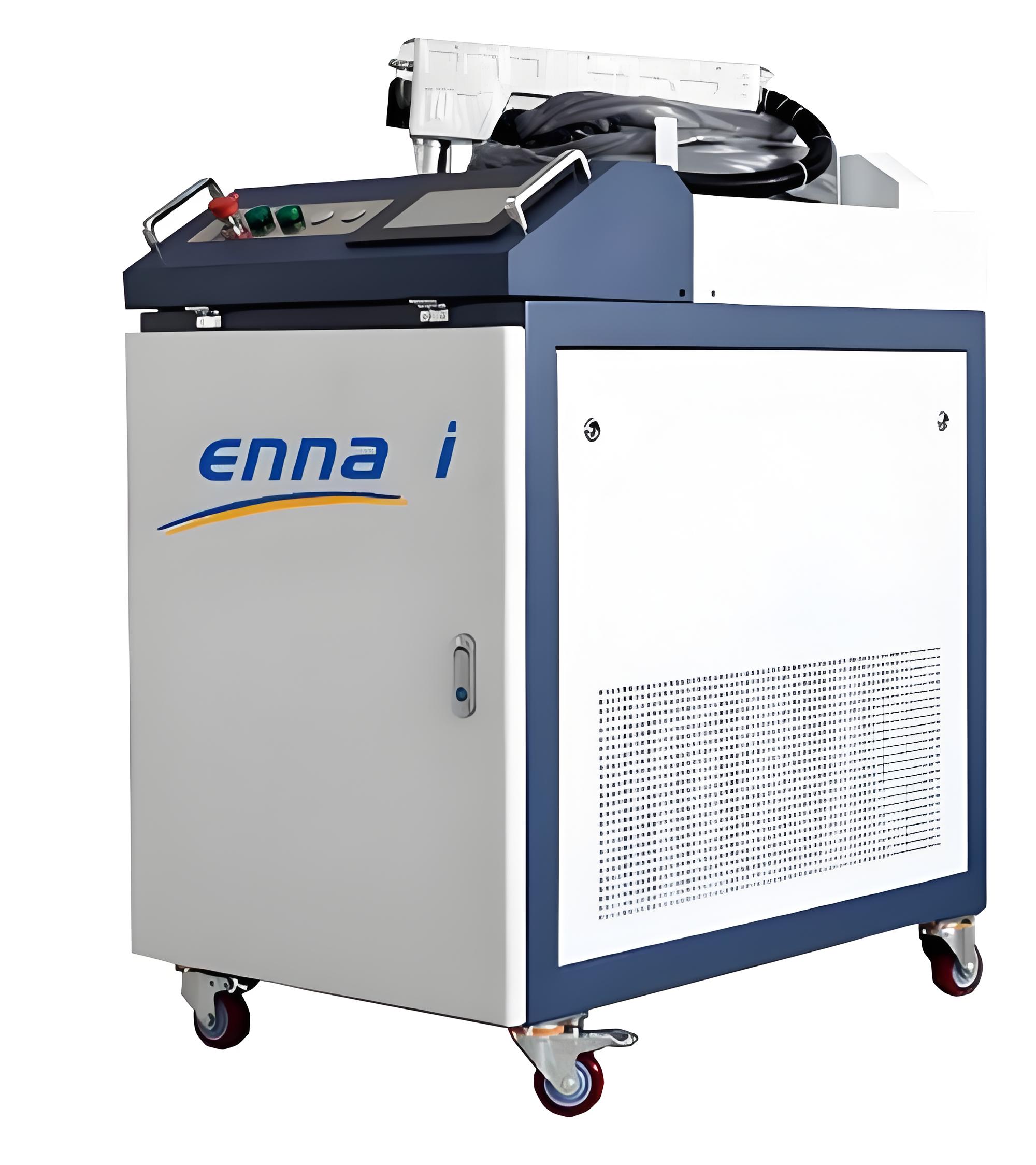Having spent over a decade in the industrial equipment sector, particularly dealing with metal cleaning and restoration, I’ve seen the rise of laser rust removal machines as a game-changer for businesses and hobbyists alike. These machines, with their precision and eco-friendly approach, have transformed how we tackle rust and corrosion. But when budgets are tight, the question I often hear is: Can you trust a used laser rust removal machine? It’s a valid concern—buying second-hand equipment can feel like a gamble, especially for something as high-tech as a laser system. Drawing from my experience working with manufacturers, workshops, and restoration pros, I’ll walk you through the pros, cons, and practical considerations of buying a used laser rust removal machine to help you decide if it’s the right move for your needs.

Why Consider a Used Laser Rust Removal Machine?
Laser rust removal machines use focused laser beams to vaporize rust, paint, or other contaminants from metal surfaces without damaging the underlying material. They’re fast, precise, and chemical-free, making them a go-to for industries like automotive repair, shipbuilding, and metal fabrication. But brand-new machines can cost anywhere from $10,000 to $100,000, depending on power, brand, and features. For small businesses, startups, or even individual restorers, that price tag can be daunting.
That’s where used machines come in. A second-hand unit can cost 30–60% less than a new one, making it an attractive option for those looking to save without sacrificing capability. However, the decision isn’t as simple as finding a good deal. There are risks, and I’ve seen both successes and headaches from clients who’ve gone the used route. Let’s break down what you need to know.
Understanding the Appeal of Laser Rust Removal
Before diving into the specifics of buying used, let’s talk about why these machines are so popular. In my years advising workshops, I’ve seen laser rust removal replace older methods like sandblasting or chemical cleaning in many settings. Here’s why:
Precision: Lasers target only the rust, leaving the metal intact.
Eco-Friendly: No chemicals or abrasive media mean less waste and safer working conditions.
Versatility: They can clean rust, paint, grease, or even delicate surfaces like historical artifacts.
Low Maintenance: Unlike sandblasters, lasers have fewer moving parts, reducing wear and tear.
But these benefits come with a catch—laser machines are complex, with sensitive components like laser sources, cooling systems, and optics. When buying used, you need to ensure these parts are in good shape to avoid costly repairs.
Key Factors to Consider When Buying Used
From my time helping clients source equipment, I’ve learned that buying a used laser rust removal machine requires careful evaluation. Here are the critical factors I always check:
1. Machine Condition and Maintenance History
A used machine’s condition is everything. I’ve seen units that looked pristine on the outside but had worn-out laser sources or clogged cooling systems. Always ask for maintenance records. A well-maintained machine from a reputable seller (like a factory upgrading its equipment) is often a safer bet than one from an individual who may have skimped on upkeep.
Check the laser source: Most machines use fiber lasers, which have a lifespan of about 50,000–100,000 hours. Ask how many hours the laser has been used. If it’s close to the limit, you might face a costly replacement (up to 40% of the machine’s cost).
Inspect the optics: Lenses and mirrors can degrade with heavy use. Cloudy or scratched optics reduce performance and require expensive replacements.
Cooling system: Air- or water-cooled systems must be free of leaks or corrosion. I once saw a client buy a “great deal” only to spend $2,000 fixing a faulty cooler.
2. Brand and Model Reliability
Not all laser machines are created equal. Brands like IPG Photonics, Raycus, or Trumpf are known for durability, but even lesser-known brands can be reliable if well-maintained. I recommend researching the specific model’s reputation. Some older models might lack modern features like adjustable pulse widths, but they can still be effective for basic rust removal.

3. Power and Application Fit
Laser machines come in various power levels (e.g., 100W, 500W, 1000W). Match the power to your needs:
Low-power (50–200W): Great for small-scale work, like restoring car parts or tools.
Mid-power (300–500W): Ideal for medium-sized workshops handling larger surfaces.
High-power (1000W+): Best for industrial applications like shipyard maintenance.
I’ve seen buyers overspend on high-power used machines when a lower-wattage model would’ve sufficed. Conversely, a underpowered machine can slow down your workflow.
4. Seller Reputation
Where you buy matters as much as what you buy. I’ve worked with clients who got burned by shady online sellers offering “like-new” machines that were anything but. Stick to reputable sources:
Certified resellers: Companies specializing in used industrial equipment often refurbish and test machines.
Auctions from trusted companies: Factories or workshops upgrading their gear can offer well-maintained units.
Avoid unverified sellers: Platforms like eBay or Craigslist can be risky unless you can inspect the machine in person.
5. Warranty and Support
New machines come with warranties, but used ones rarely do. Some resellers offer limited warranties (e.g., 6 months), which can provide peace of mind. Also, check if the manufacturer still supports the model for parts and service. I once helped a client track down a replacement lens for an older model, and it was a nightmare because the manufacturer had discontinued support.

Pros and Cons of Buying Used
To make things clearer, here’s a table summarizing the advantages and risks of buying a used laser rust removal machine, based on my observations in the field:
| Aspect | Pros | Cons | Mitigation |
|---|---|---|---|
| Cost | 30–60% cheaper than new | Risk of hidden repair costs | Request maintenance records |
| Availability | Immediate access to high-end models | Limited selection of models | Research reputable resellers |
| Performance | Can match new machines if maintained | Worn components reduce efficiency | Test machine before purchase |
| Support | Some resellers offer warranties | Older models may lack manufacturer support | Confirm parts availability |
My Step-by-Step Guide to Buying a Used Machine
Here’s the process I follow when helping clients source a used laser rust removal machine. It’s saved me (and them) from plenty of headaches:
Define Your Needs:
What materials are you cleaning? (Steel, aluminum, etc.)
What’s your workload? (Occasional hobby use or daily industrial tasks?)
What’s your budget? Include potential repair costs.
Research Models and Sellers:
Look for models from trusted brands with good reviews.
Contact sellers for detailed specs, usage hours, and maintenance history.
Inspect the Machine:
If possible, visit the seller to see the machine in action. I once caught a faulty cooling fan during an in-person demo, saving a client from a bad purchase.
Test it on a sample piece of rusty metal to check performance.
Look for signs of wear, like burn marks on optics or rust in the cooling system.
Negotiate and Verify:
Haggle based on the machine’s condition and market value. I’ve negotiated 10–20% off by pointing out minor issues.
Request a third-party inspection if buying from a distance.
Plan for Setup and Training:
Ensure your team knows how to operate the machine safely. Lasers require proper training to avoid eye or skin damage.
Budget for accessories like safety goggles or a fume extractor.
Secure Transport and Installation:
These machines are heavy and delicate. Use professional shipping services to avoid damage.
Hire a technician to calibrate the machine after delivery.
Real-World Example: A Lesson Learned
A few years back, I helped a small auto restoration shop source a used 200W laser rust removal machine. They found a deal on a Raycus model for $8,000—half the price of a new one. The seller provided maintenance logs, and we tested the machine on some rusty car panels. It worked beautifully, removing rust without damaging the paint underneath. But here’s where we almost slipped up: the cooling system had a minor leak we didn’t catch until after purchase. Thankfully, the seller agreed to cover the $500 repair cost, but it taught me to always double-check the cooling system during inspections.
That shop still uses the machine today, saving thousands compared to sandblasting or buying new. It’s a reminder that with due diligence, a used machine can be a fantastic investment.
When to Avoid Buying Used
Not every situation calls for a used machine. Here’s when I’d steer clear, based on my experience:
High-Volume Operations: If you need the machine running 24/7, a new unit with a warranty is safer.
No Maintenance Records: Without a clear history, you’re gambling on hidden issues.
Obsolete Models: If parts aren’t available, repairs can be impossible or prohibitively expensive.
Limited Budget for Repairs: If you can’t afford potential fixes (e.g., $2,000–$5,000 for a new laser source), stick to new or leased equipment.

Alternatives to Buying Used
If a used machine feels too risky, consider these options:
Refurbished Machines: Certified resellers often sell refurbished units with warranties, balancing cost and reliability.
Leasing: Some suppliers offer lease-to-own programs, spreading costs over time.
Lower-Power New Machines: A new 100W machine might cost less than a used 500W one and come with full support.
I’ve helped clients lease machines when they weren’t ready to commit to a purchase. It’s a great way to test the technology without the upfront cost.
Maintenance Tips for Longevity
Once you’ve got your used machine, keeping it in top shape is crucial. Here’s what I do for my clients’ equipment:
Clean Optics Regularly: Use lens cleaning solution and microfiber cloths to prevent buildup.
Monitor Cooling Systems: Check water levels or air filters weekly to avoid overheating.
Schedule Professional Servicing: Annual checkups by a technician can catch issues early.
Store Properly: Keep the machine in a dry, dust-free environment to protect sensitive components.
My Take: The Value of Going Used
After years in the industry, I’ve seen used laser rust removal machines save businesses thousands while delivering near-new performance. The key is doing your homework—check the machine’s condition, verify the seller, and match the specs to your needs. I’ve watched small workshops transform their operations with a well-chosen used machine, turning rusty junk into pristine metal in minutes. But I’ve also seen folks lose money on bad deals due to rushed decisions.
If you approach it with caution and follow the steps I’ve outlined, a used machine can be a smart, budget-friendly choice. It’s not just about saving money—it’s about getting the right tool to make your work shine.

Related Questions and Answers
Q: How can I tell if a used laser rust removal machine is still in good condition?
A: Ask for maintenance records, check the laser source’s usage hours, inspect the optics for damage, and test the machine on a rusty surface. If possible, have a technician evaluate it.
Q: Are used laser machines safe to operate?
A: Yes, if properly maintained and used with safety protocols (e.g., protective eyewear, proper ventilation). Always train staff on laser safety to prevent accidents.
Q: What’s the typical lifespan of a laser rust removal machine?
A: A well-maintained fiber laser can last 50,000–100,000 hours, roughly 10–20 years with moderate use. Used machines may have fewer hours left, so check usage history.
Q: Can I upgrade a used machine with new features?
A: It depends on the model. Some allow upgrades like better optics or software, but older models may not support modern add-ons. Confirm with the manufacturer.
Q: Are there financing options for used machines?
A: Some resellers offer financing, and leasing is an option for new or refurbished units. Check with suppliers for terms, as they vary widely.






